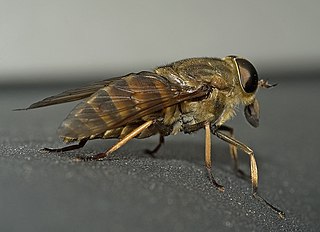
The Brachyceran infraorder Tabanomorpha is a small group that consists primarily of two large families, the Tabanidae and Rhagionidae, and an assortment of very small affiliated families, most of which have been included within the Rhagionidae.
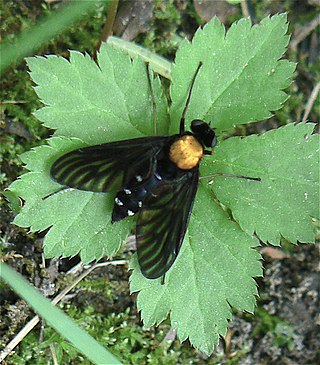
Chrysopilus is common, worldwide genus of predatory snipe flies. There are approximately 300 species in the genus, including fossil members that are sometimes found in amber.

Rhagionidae or snipe flies are a small family of flies. They get their name from the similarity of their often prominent proboscis that looks like the beak of a snipe.

Rhagio is a worldwide genus of predatory snipe flies. Several species in this genus are referred to as downlooker or down-looker flies because they sometimes perch on tree trunks in a head-down position. There are approximately 170 species. They can be distinguished from other rhagionids by the open anal cell on the wings and the lack of a kidney-shaped arista.
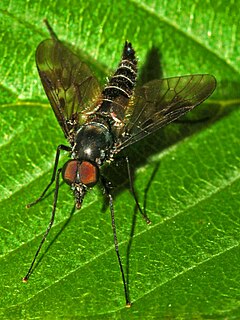
Athericidae is a small family of flies known as water snipe flies or ibis flies. They used to be placed in the family Rhagionidae, but were removed by Stuckenberg in 1973. They are now known to be more closely related to Tabanidae. Species of Athericidae are found worldwide.

Ptiolina is a genus of snipe flies of the family Rhagionidae,. Examples are found in Northwest Europe, where it prefers woodlands areas. and North America
Spania is a genus of snipe flies of the family Rhagionidae.
Litoleptis is a genus of snipe flies of the family Rhagionidae.
Austroleptis is a genus of snipe flies, and the sole genus in the family Austroleptidae; until 2010, it was placed in the family Rhagionidae. They are small to moderately sized flies of around 3 to 7.7 mm.
Arthroceras is a genus of snipe fly of the family Rhagionidae. Arthroceras are mid-sized to large 4.5 to 13 millimetres, black, grey, or yellowish-colored flies that have a fairly long, tapering antenna consisting of 5–8 flagellomeres. Within Rhagonidae, the genus is sometimes(?) placed in the subfamily Arthrocerinae, in which it is the only genus.

Chrysopilus cristatus, is a species of 'snipe flies' belonging to the family Rhagionidae.

Ptiolina obscura is a species of 'snipe flies' belonging to the family Rhagionidae.

Chrysopilus fasciatus is a species of snipe fly in the family Rhagionidae.

Chrysopilus quadratus is a species of snipe fly in the family Rhagionidae.
Chrysopilus proximus is a species of snipe fly in the family Rhagionidae.

Rhagio annulatus is a Palearctic species of snipe fly in the family Rhagionidae.
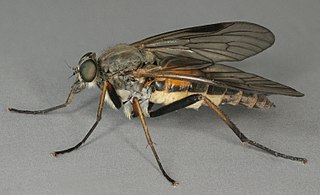
Rhagio notatus is a Palearctic species of snipe fly in the family Rhagionidae.

Chrysopilus erythrophthalmus is a Palearctic species of snipe fly in the family Rhagionidae.
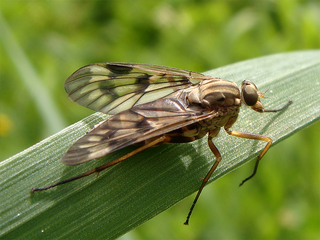
Rhagio strigosus is a Palearctic species of snipe fly in the family Rhagionidae.

Symphoromyia immaculata is a Palearctic species of snipe fly in the family Rhagionidae.














